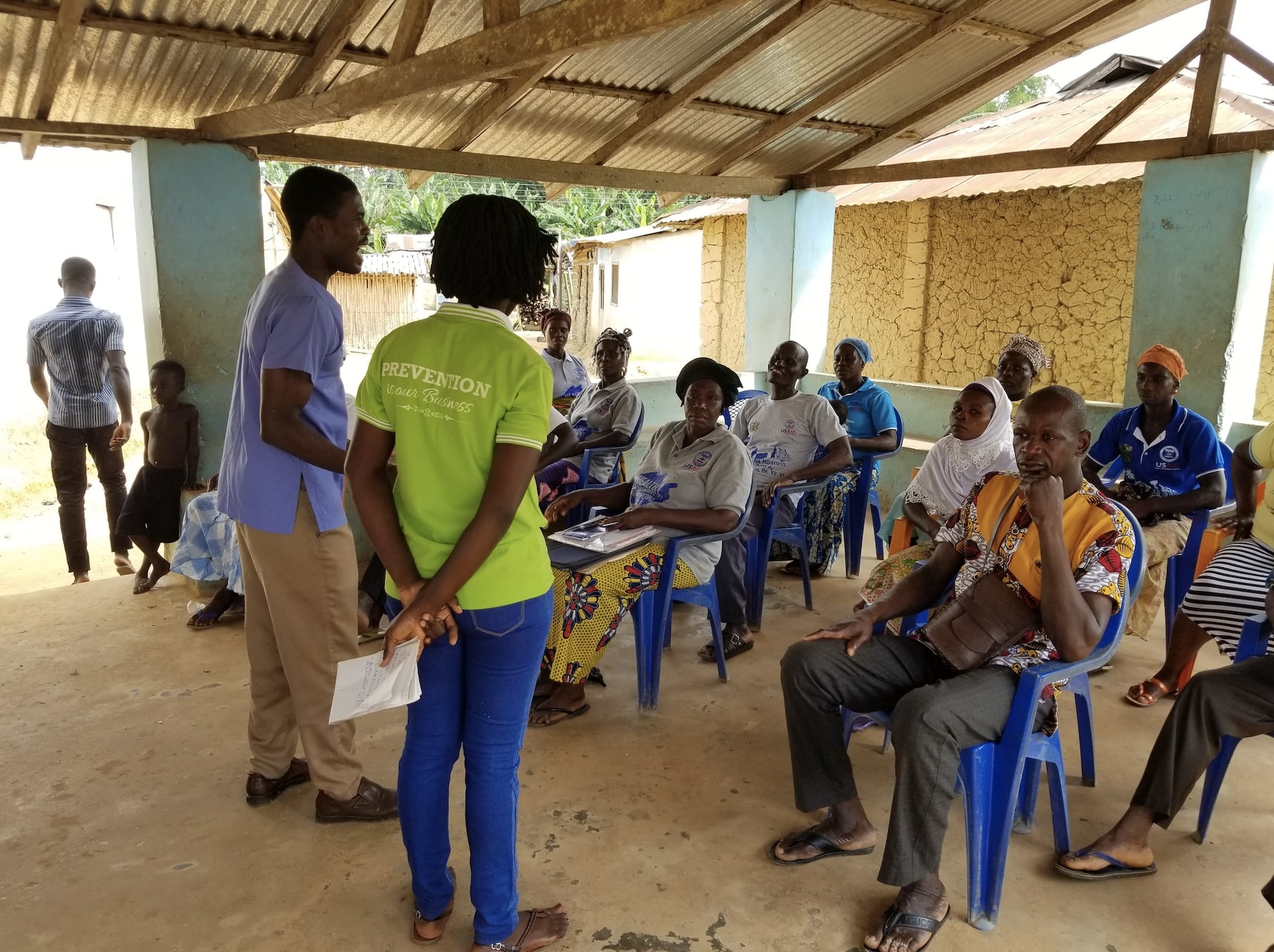
Hen Mpoano: Building a Healthy Environment and Healthy Families at the Last Mile
October 5, 2021
By: Tamar Abrams
This post was originally published on the Knowledge SUCCESS website. To view the original post, click here.
Ghanaian nonprofit Hen Mpoano implements and supports coastal and marine ecosystems governance projects and best practices. Tamar Abrams talks with Hen Mpoano’s deputy director about a recent project that took a Population, Health, and Environment (PHE) approach, integrating the health of both the environment and those who live there.
Coastal communities in the Western Region of Ghana are no strangers to attention from NGOs and funders. They have been the beneficiaries of programming in fisheries, conservation, climate change and livelihood development. But, notes Stephen Kankam, Deputy Director of nonprofit organization Hen Mpoano, “It was relatively easy to broaden the mandate of the community-based structures to include family planning and reproductive health awareness creation.”
Integrating Health and Family Planning into Greater Amanzule Wetland (GAW) Landscape Conservation and Small-Scale Fisheries Management in the Western Region of Ghana aimed to create awareness of and interest in PHE (Population, Health, and Environment) approaches. It was designed to strengthen systems for community-based distribution of contraceptives; promote access to health, environment, and livelihoods using PHE platforms; and foster institutional collaboration across sectors to build support for future PHE initiatives. But its successes and challenges have offered insights and a roadmap for other organizations looking for an integrated PHE approach to improving the health of both the environment and the inhabitants who live there.
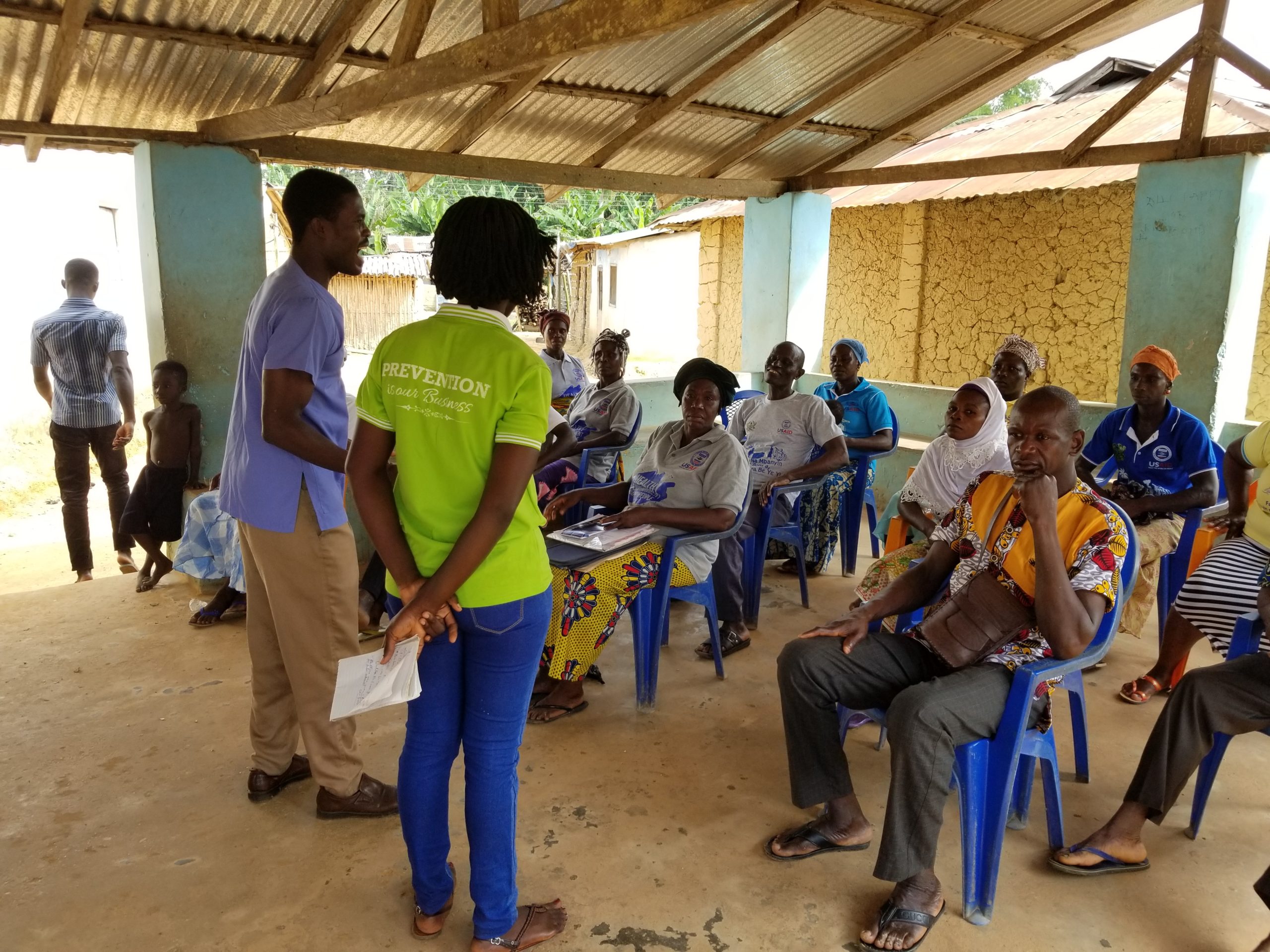
Health workers teach a Natural Resource Management group about family planning. Photo: Hen Mpoano.
Cross-Sectoral Approach
The Western Region of Ghana is remote and a challenging environment for those who work and live there. Some 70% of the land is covered by swamp forest, making it difficult for inhabitants to access health care and other needed services. Government health provision typically does not reach the isolated communities. For the Ankobra River estuarine communities, for example, the nearest hospital is more than 20 km away.
Kankam notes, “Adding a family planning component to an existing environmental program is a cost-effective way for addressing holistic development needs of natural resources-dependent communities. A cross-sectoral approach that integrates family planning holds promise for delivering both health and conservation outcomes simultaneously.” However, he cautions, “Timing of inclusion of the family planning component into an existing environment program is critical for integration to yield the desired results and benefits. Sufficient time is required to build strong relationships and trust among actors of an environment program at the local and sub-national levels in order to lay the groundwork for family planning integration.”
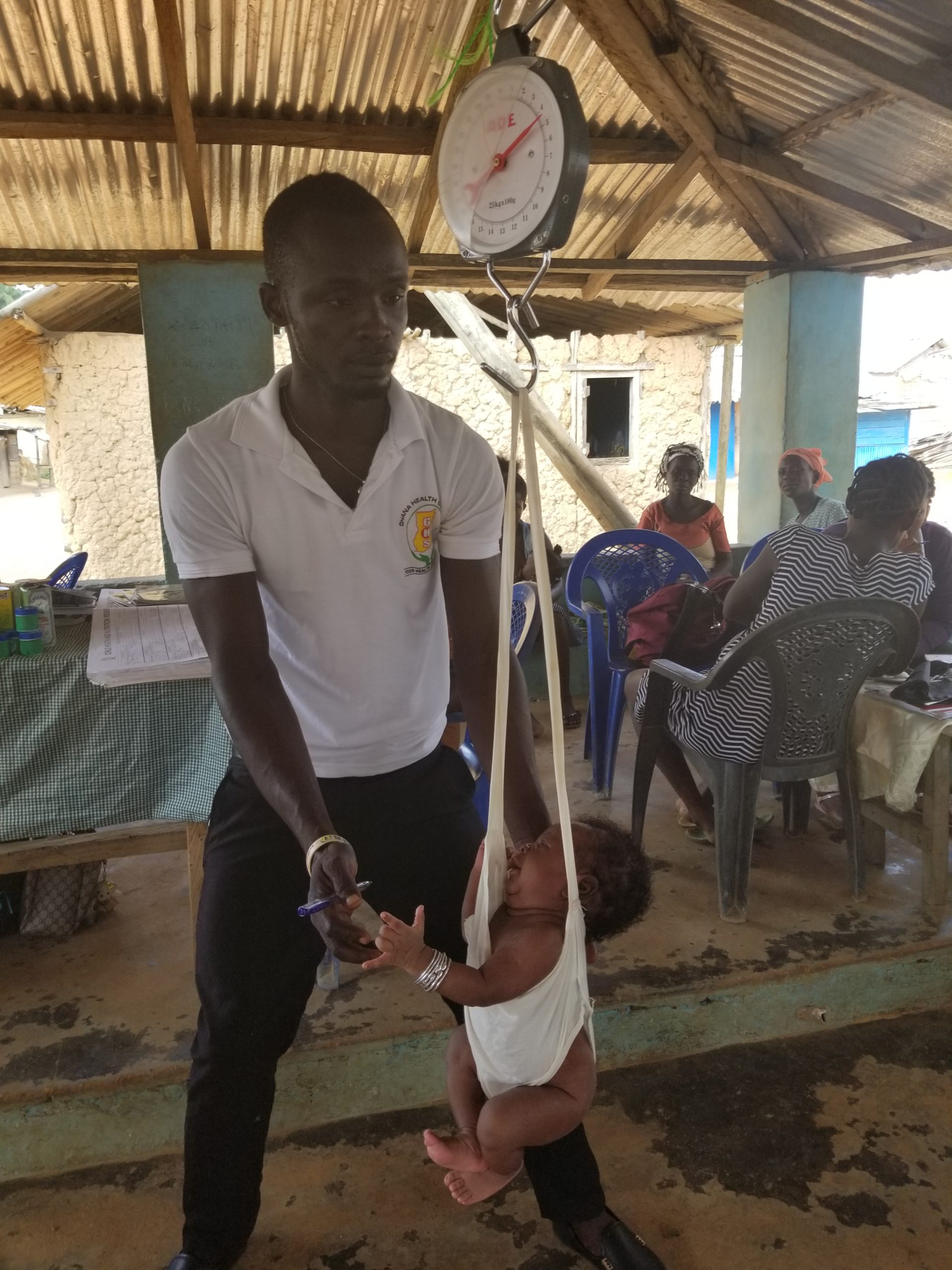
A health worker weighs a baby. Photo: Hen Mpoano.
Reaching Out to the Community
To gain buy-in for the family planning component, outreach included key stakeholders such as district health officers, teachers, police, and religious leaders. Some 23 traditional birth attendants (TBA) within the 10 PHE project communities received training on PHE linkages to promote voluntary family planning and other health care. Training modules included: TBA and family planning education, the role of the TBA in birth preparedness, malaria control and the use of long-lasting treated nets and handwashing techniques.
Innovative outreach activities to the communities included music videos, posters, the use of a public address system, and interactive drama performances. Still, there were some major barriers to the positive messages about family planning being heard. “We realized that for women in conjugation, husbands exerted a strong influence on their choice of contraceptives,” says Stephen Kankam. “This was a barrier to promotion of family planning as women were not completely independent in their choice of family planning and uptake of methods. Meanwhile, the project design assumed that community leaders, which included men, were effective at promoting family planning and therefore missed the opportunity to engage husbands as key stakeholders for targeted communication.”
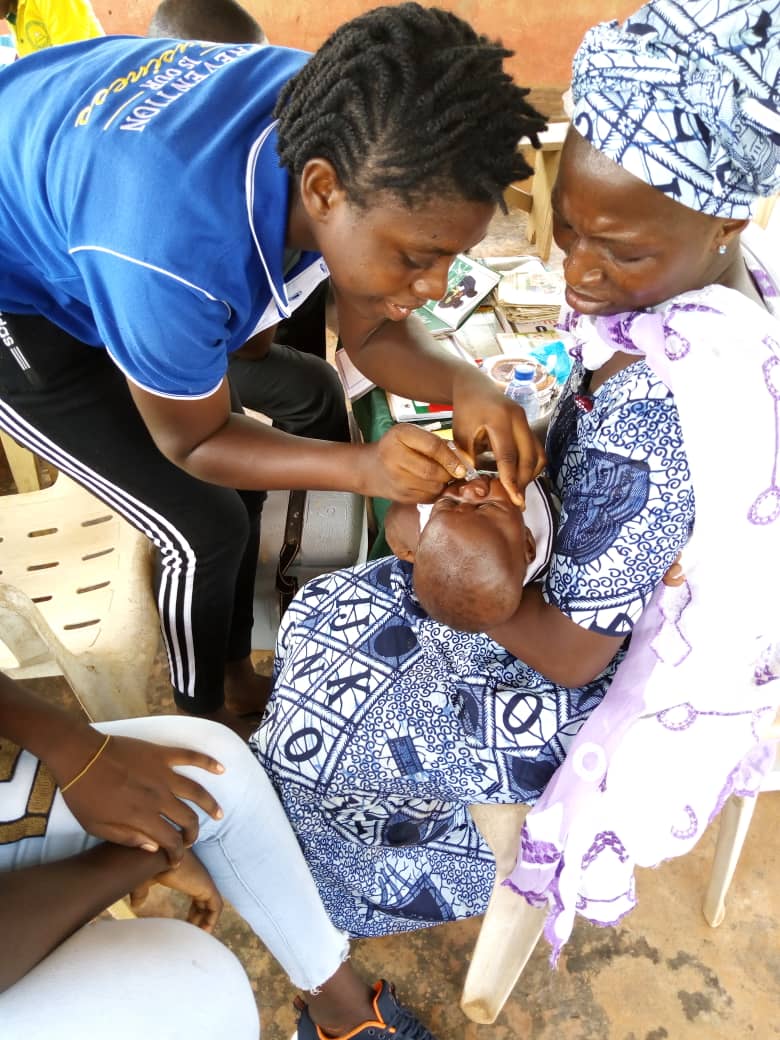
A health worker administers a vaccine to a baby. Photo: Hen Mpoano.
Additionally, of the three public health interventions—handwashing, use of long-lasting insecticide-treated nets, and family planning—the only one for which there were deep misconceptions was family planning. “These misconceptions were relatively difficult to dispel with messages targeted at mainly at women,” Kankam admits.
Kankam and his team focused on the misconceptions most widely held by women, which were that they could lead to fibroids and infertility. In response, they urged women to understand their own health histories in order to make informed choices about family planning that could minimize potential side effects. He acknowledges, “As a project, we learned that family planning messages are more effective when they are transparent about, and also address, the potential side effects of contraceptives – whether perceived or real.”
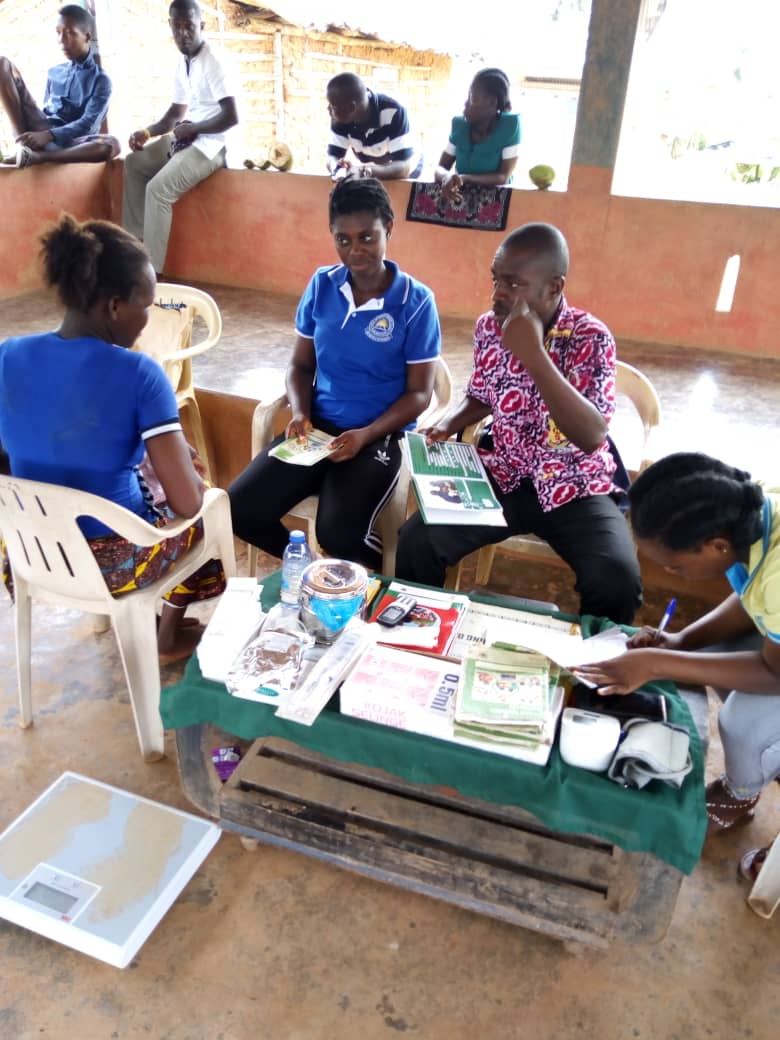
Health workers provide a nursing mother with family planning information. Photo: Hen Mpoano.
Outcomes Were Positive
The project was a success in terms of family planning despite the noted challenges By July 2019, family planning acceptance had increased by more than 50% compared to the pre-project baseline. During the 11 months, 78 women received voluntary family planning care, 40 pregnant women and more than 406 nursing mothers respectively received antenatal healthcare services and participated in child welfare clinics, and 203 children who lacked immunization were immunized. Kankam says that, “Due in part to the short duration of the project, data was not collected to assess the impact of contraceptive use on the environment.”
Looking back, Kankam is pleased by the lessons learned during the short project: “We leveraged local knowledge and trust of existing environmental sector groups – PHE champions – to hasten collaboration for achieving integrated PHE outcomes. The project built capacity of local actors to develop and disseminate targeted PHE messages at the community and district levels. As local actors developed trust, further collaboration with health professionals improved access to health care in remote and under-served coastal areas in the Western Region of Ghana.”
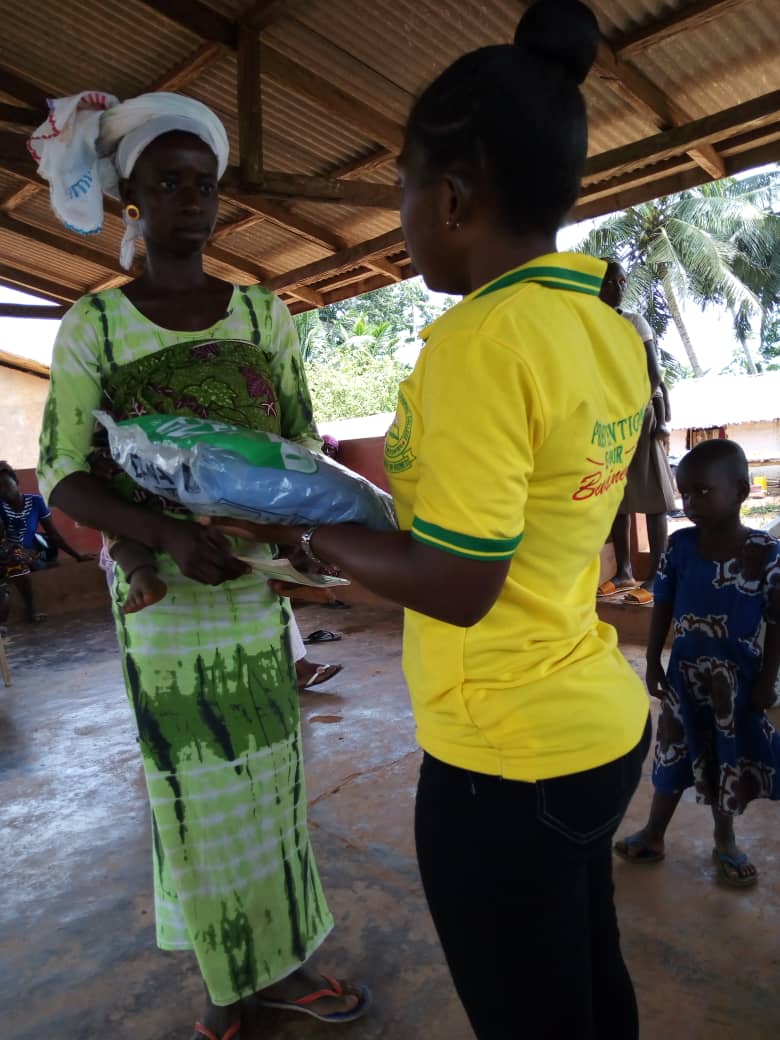
A nursing mother receives a mosquito net from a health worker. Photo: Hen Mpoano.
Though funding for the project ended a year ago, Hen Mpoano staff are exploring new ways to scale up to a larger geographical area building on the momentum created by the project, local ownership of the PHE interventions; and are developing a robust monitoring and evaluation system to assess the model’s effectiveness in achieving health and environment outcomes.
The integration project was funded through USAID’s Advancing Partners and Communities (APC).



